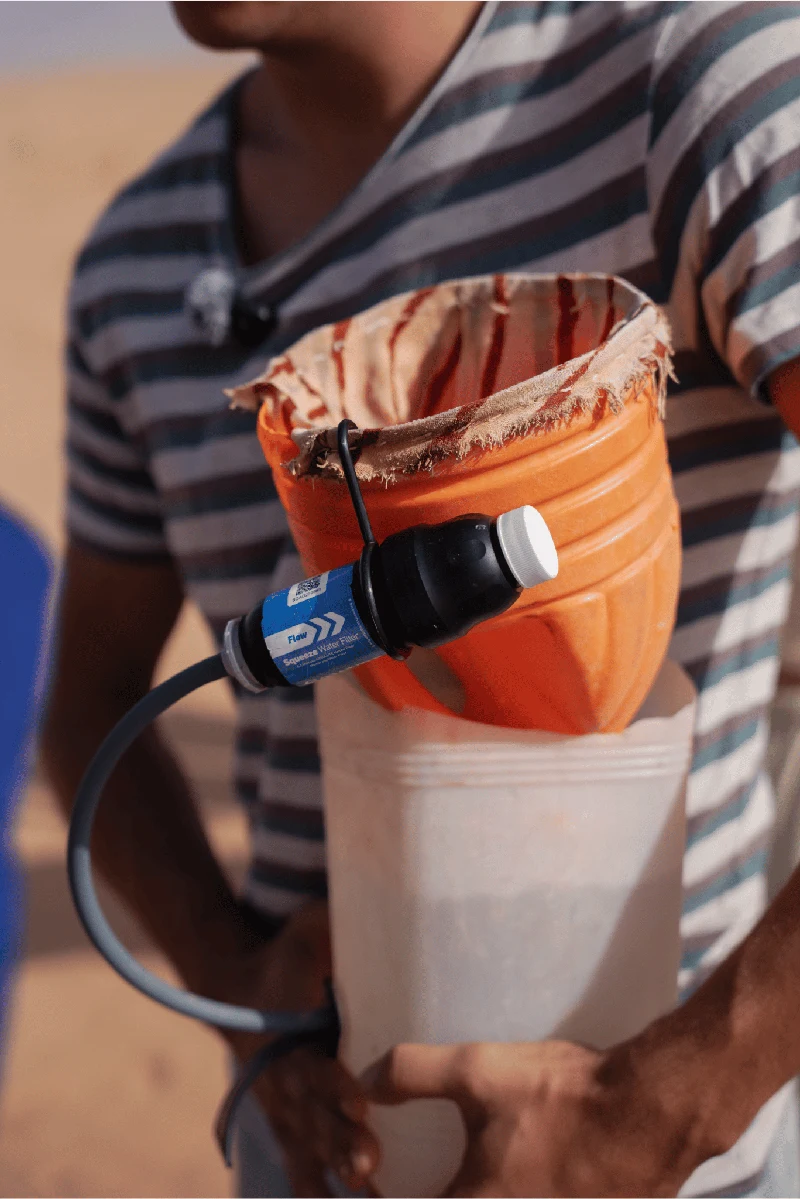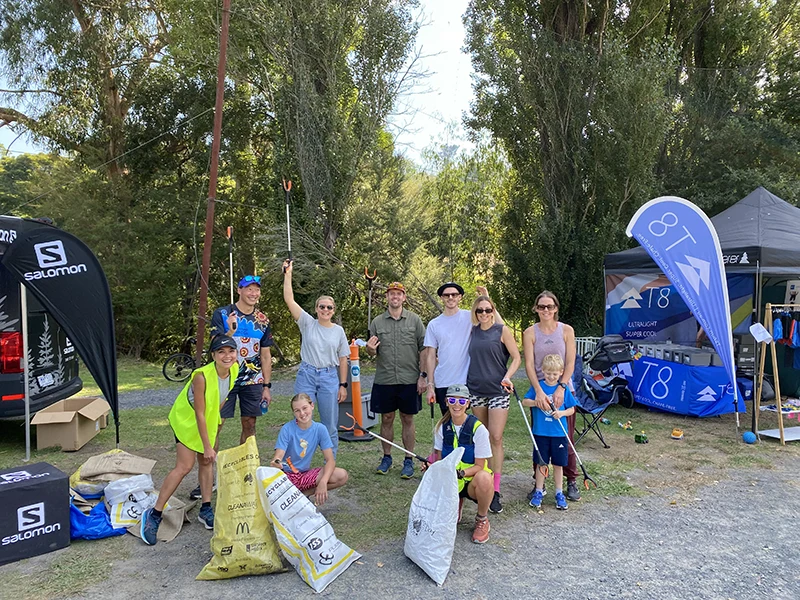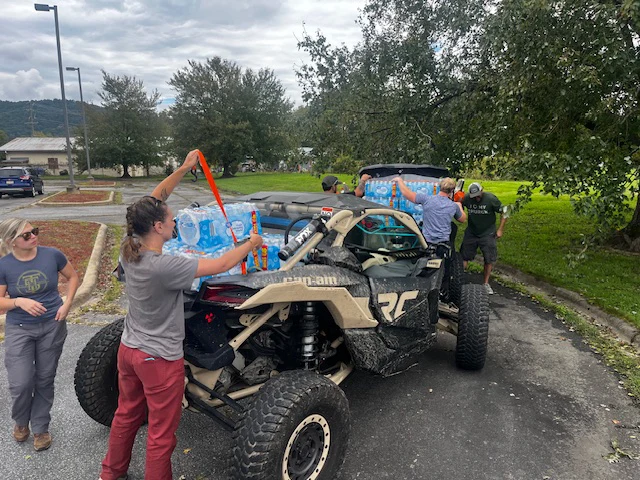

For seven years, I led an expedition of over 18,000 human-powered miles from Patagonia to the Arctic. The mission was to bear witness and connect stories of the land and lives across the Americas. An evolving team of friends, mentors, and I did this by engaging with persistence and humility through immersion in nature and culture on foot, in boats, and on bikes. Wherever possible, we learned to travel as the locals did and I can tell you this much: humanity follows water.
It has been a year since completing the Her Odyssey Expedition, and I am both relieved and uncomfortable to find stillness. We’ve all felt the post-adventure rush at the trailhead, where experience begins its journey into story, before hurry and busyness take hold. I am grateful for the chance to slow down and let lessons percolate.
As with waters muddied by passing feet, we need time to settle and in that stillness feel the reverberations of what we’ve accomplished.

I told the story to an elder a few days ago she said, “I’m so glad you went out there and lived my dream for me.” I realized the truth as I replied, “There were times when I didn’t have it in me and knowing I was doing it for others is what kept me going.”
Just as an internal, collective drive kept me motivated, partners like Sawyer enabled me and the folks who joined to not only survive, but thrive and engage reciprocally with the support, inspiration, and insight of host communities.

For example, my last-minute request for a group filter to use with the Maranon River Waterkeepers in Peru was met by a donation of three International Bucket Systems. We distributed those to communities along the Golden Serpent River.
Further along the route, walking alongside refugees across Peru, Ecuador, and Colombia, I wished there was something concrete we could do.
The next week Sawyer suggested we participate in a social media campaign, and as a thank-you would donate 100 filters to the country of our choice. I was dubious when asking if aid could be given in Venezuela, homeland to the majority of our fellow walkers at that point. Sawyer did not hesitate.
To honor the stories and need for clean, drinkable water I have braided together some of the lessons it taught me over these last 18,000 miles of Slow Travel.
From the Ends of the Earth

From the starting point at Argentina’s Beagle Channel, Lauren Reed and I crossed peat bogs and Senos. They say the Ona people who used to populate this area would free-dive in the wild, frigid waters. Little remains of their story except legends, grainy photographs, and crosses behind a white picket fence in an overgrown cemetery outside Rio Grande, Argentina.

Walking past the city dump outside of Punta Arenas, Chile through a snowy chubasco. When Lauren paused to check both map and GPS. She swept a searching gaze across the landscape. “We can see both the Pacific and Atlantic Oceans from here,” she mused.
We stood still in the localized storm, regarding how water frames us, cradles our homes, defining and redefining boundaries, often roiling where it meets and changes.

From hills, we descended into the peat bogs, or turbo. Deep, squelching, extraterrestrial sponge-life in miniature coils and tendrils covered this diverse and vital carbon sink. All I know is, your feet are never dry so let it go and still, when possible, you tried to hop on the brain-like sponges as they were the sturdiest. We passed plots where squared off chunks turbo is being peeled away to source ingredients for cosmetics and drained to clear the way for roads.
We journeyed on until the bladderwort sea grapes popped under the toes of our shoes on endlessly long, wide white sandy beaches where it was only us, the mine docks, wind, and penguins.

Still we descended further; until, a few feet below sea level I got an in-Reach message from my uncle, “are you underwater right now?” We were soon booking it across Seno Skyring, one of the Chilean sounds because the tide was filling in the bay which had seemed like a shortcut an hour ago, . We crunched jagged metropolises of black bivalve mollusks on the race inland. Sub-Patagonian waters taught me to consider the consequences of choices and when to move quickly and confidently to survive.
Glaciers as Trail Blazers

We laughingly declared from our start below sea-level, “It’s all uphill from here!” then followed the Greater Patagonian Trail into the land of glaciers and roaring, crystalline rivers. Over the miles, it dawned on me that it was the glaciers’ transcontinental journey these past 2 million years which carved the valleys we now walked. They literally laid the way, their story wasetched in stone.

Many miles and a couple years further north, we met some of the last remains of Tropical Glaciers. In Peru, I was struck by walking past an abandoned village at the mouth of a mountain bowl. Bits of filthy, dark ice clung to shaded pockets of the arid, dusty natural amphitheater, like the last morsels of food in the corner of tupperware.

Saturated patches of soil gave no flow, the community who had lived at its feet had long since had to pack up and move away, leaving only their walls.
I scooped dry sand between my fingers from the etched prints of a bygone river bed.
The valley echoed hollow.
Drops in the Desert

Creating a route across the northern half of South America had already been done, over 500 years ago. The peoples of Inca Empire built and connected 30,000+ kilometers of the Qhapaq Ñan, what is now known as the Andean Road System.
Today the remains of these Inca Roads connect 6 countries. The work was so well done that the rocks of the fields and mountainsides still sluice water or, in other areas, have been used as the foundations for railroad tracks and highways.

The Andean Road System climbed up to the altiplano, where the word agua is spoken like a prayer.
We crossed through dried, salty sea beds and past crops of potatoes and quinoa. Most surface water was undrinkable due to the mixture of pesticides on the crops, salt on the flats, lack of hygiene infrastructure, and poisons from the mines.

A Spanish-era story of the folklore patron saint, Difunta Correa, tells of her death on the open arid lands. Miraculously, her infant son was found alive, suckling at her breast. On some stretches, it was by the grace of her altars and the plastic water bottle ofrendas left by the faithful, that we had shade and water at all.
Further north, in Bolivia, Cholitas said the salt flats were formed by tears of grief and milk lactating down from one of their mountains at the loss of her child and/or lover. Slowly I learned that even the driest and most empty-seeming places teem with potential for life in those hardy sorts who know how to stay low and live humbly. Deserts know how to play the long game.

The deserts I crossed - the Atacama, Baja, Chihuahua, Sonora, and Red to name a few - reframed my perspective from deficiency to sufficiency.
My perspective of privilege expected a heedless surfeit at every turn. Yet, while resources are admittedly thin in a desert environment, there is enough to sustain life when treated and shared judiciously.
My teachers were the bulbous elephant trees of Baja California, the flamingoes who make rocky nests and rear their chicks around the salares, and the palo verde trees who nurse the mighty Saguaro. They taught me reciprocity.

Daming the Rio Marañon

The Rio Marañon springs from the Nevado de Yapura glacier in the Cordillera Blanca of Peru. Uniquely, the river is northward-flowing and has carved a scar in the land 3 times deeper than the Grand Canyon. While still in Patagonia, we had read about Hitler Rojas, a community leader in the region who spoke out against one of the 20 proposed dams and was shot to death just as he was becoming mayor.
Over the miles, discussing what we’d learned, I began laying plans to divert our route and diversify our track in order to support and advocate for awareness of the struggles folks across the globe are facing to protect their homelands.

Thus, the Marañon Experience was created; an international group under the Waterkeepers Alliance. The mission of our paddle was to bring Confluir, an enviro-adventure documentary about the river and the protests against damming, back to the people. To echo back their voices are heard beyond those canyon walls.
From the Rio Marañon, I learned a new way to listen, not for intent or outcome but to understand and sit simply in discomfort, listening to the rapids roar.
The Way of Water

Contrary to conceptualization in the adventure industry, the Darien Gap, the fraught isthmus which connects South and Central America, is heavily traveled. There are various routes (all of which involve boats) depending on the season, flooding, and military/contra activity.
From Capurgana I watched a group of 50 people walk down the village street and disappear into the jungle. Barefoot women with babies strapped to their backs, elders in traditional robes, young men in jeans with all their earthly possessions in a plastic grocery bag balanced atop their heads. They went in singing.

Resilience and adaptation kicked in once we realized that as gringos our presence endangered their lives and so we’d have to go around, either by boat or plane.
It was here that I came to understand waterways as transit and absorbed a new lesson of traveling with respect to others.
Sometimes, taking no for an answer is the most respectful way forward. Even and perhaps particularly when if it means going backwards.
[Both terrains were made more accessible for the earthly workings of Iohan Gueorguiev. He was one of the best of us. Drift easy into the eternal, way opener.]
Cleaning Up the Caribbean

Paddling out of the bustling bay in Bocas del Toro, Panama, I pointed the bright red nose of my Trak kayak in the gray water toward a floating plastic bag and styrofoam cup. I intercepted the litter where the constant wake of motorboats pushed a wall of flotsam into swirling wells along the shore and beneath the deck of a rental holiday house.
Bulbous, dangling from the end of my paddle, I thought about how the bag looked a lot like a jellyfish. I could see how a sea turtle would be confused.
A woman enjoying her morning coffee on the deck called out, “Thank you SO MUCH for picking up that trash! It’s just so sad to see it, isn’t it?” I smiled and nodded to her but paddled away feeling like I’d swallowed the plastic bag myself.

I am still processing frustration with how we as a species ignore problems until they are in our faces and even then our response is to wish we didn’t have to see it. We’d seen it while learning how to roll our kayaks, scheduling sessions around normal toilet flushing hours of 9-11 am. I believe many of us are coming to understand this blindness as a crux in the journey of human accountability to the Climate Crisis.
Meanwhile, quietly, the oceans have been holding our waste and building islands of the refuse.
Ascending to the Arctic

Eventually our journey brought us into Canada on the Great Divide Trail. Again traveling past landscapes formed by glaciers but bearing memory of oceans; fens, soggy mountainsides, boggy mountain passes, and tussocks. Inspect any element closely enough and you see the ocean floor in their patterns. When the Rockies eventually tipped us into the Arctic Drainage, we were able to exclaim for the first time in 15,000 miles, “It’s all downhill from here!”

Over those final four months of paddling we saw that everything in nature must eventually be processed. Filtered through the Deltas, under the Boreal canopy, absorbed through the tundra, eventually pushed in sunny white sand islands out to sea. We saw dumps full of old refrigerators and bear carcasses being swallowed back into the tundra.
Stewards of the Sea

The environment wasn’t our only teacher on the Great Divide Trail. We were greatly aided, warmly welcomed, and well advised by the folks who lived along the DehCho. These were primarily Indigenous folks and Nations such as the Chipewyan, Dene, Inuvialuit many of whom are doing the herculean personal and community work required to move toward Truth and Reconciliation. Simultaneously, they welcomed us most graciously into their homes and shared shelter, food, celebrations, and resilient joy.
Bruce in Tuktoyaktuk summed it up best, “generosity is part of our culture.”
From these and many others, I’ve learned that water will hold and land will tell our story far more truthfully and across a longer span of time than we humans are capable of reckoning. We can learn a great deal by paying attention to the story water is telling us, whether through environmental DNA or following its example. There are times to hurry and times to become still and absorb deeply.

We are, at best, stewards in passing.
To do it well, we must work together, show up intentionally, and listen deeply.
From the Squad
Campfire conversations with our community, from Squad Members and Ambassadors to Brand Partners and the Sawyer team.

















